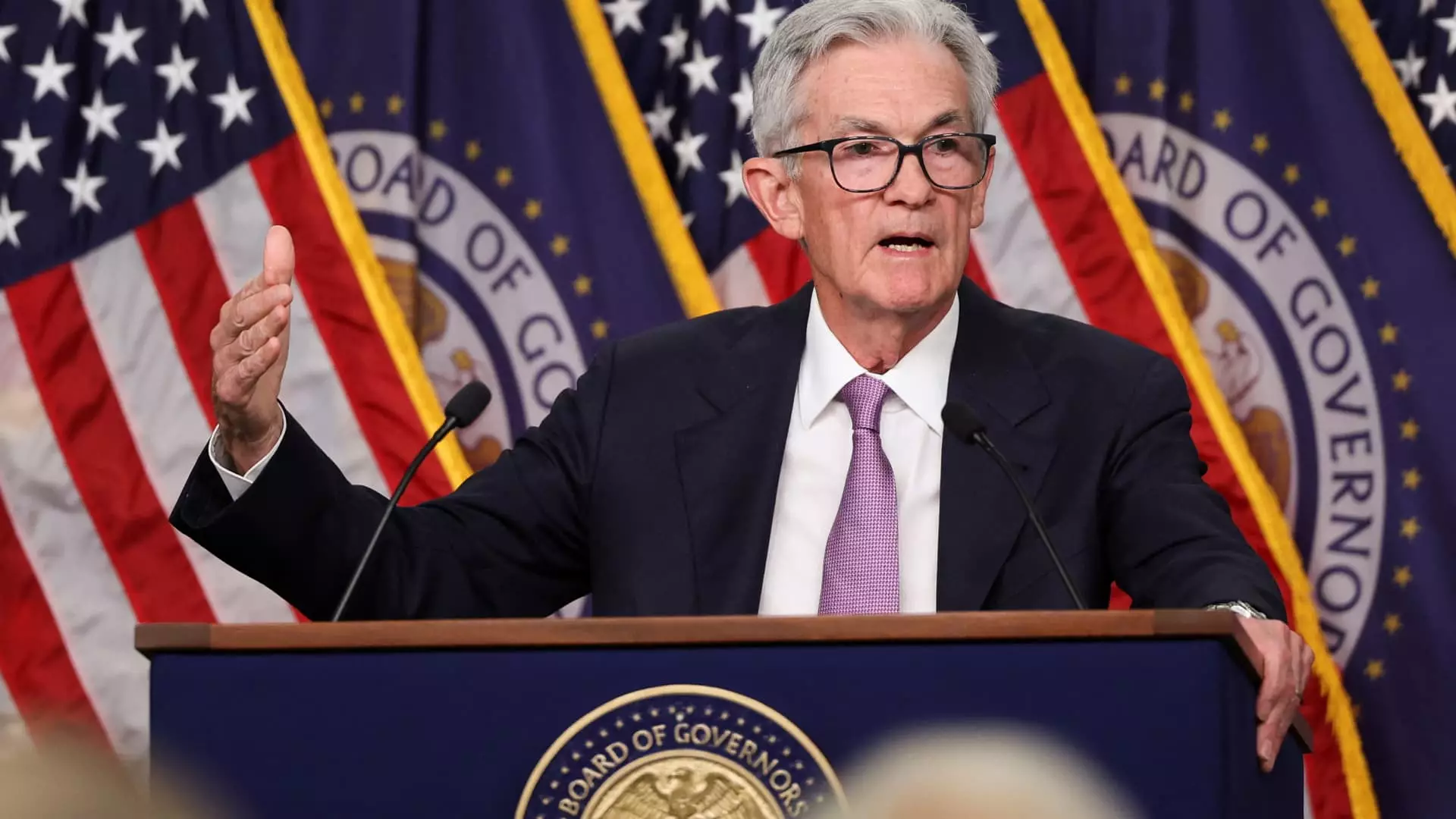The Federal Reserve’s recent decision to implement its second consecutive interest rate cut encapsulates a pivotal moment in the ongoing management of the U.S. economy. On Thursday, the Federal Open Market Committee (FOMC) announced a reduction of 25 basis points, adjusting the benchmark overnight borrowing rate to a target range of 4.50% to 4.75%. This move follows September’s notable half-percentage-point cut, showcasing the Fed’s measured approach in navigating its monetary policy amidst a diverse array of economic indicators. The rate established by the Fed critically influences the costs of various consumer debt forms, impacting mortgages, credit cards, and auto loans, thereby resonating widely with the general public.
From the outset, market reactions reflected anticipation of this decision, a sentiment bolstered by prior statements from Fed officials. Unlike the preceding rate adjustment, which saw dissent within the ranks—a rarity since 2005—this latest vote was unanimous, signaling a collective agreement among policymakers.
The FOMC’s post-meeting statement indicated subtle shifts in the Fed’s economic outlook. Notably, the committee acknowledged the need to balance employment and inflation goals. Prior to this, its rhetoric had conveyed a more assertive confidence in its ability to manage inflationary pressures while simultaneously bolstering labor market conditions. The latest assertion, however, suggests a recalibrated stance; it now describes risks to achieving its dual objectives as “roughly in balance.” This newfound caution indicates a pragmatic approach, reflecting the complexities inherent in contemporary economic dynamics.
Furthermore, the Fed’s assessment of the labor market revealed slight downgrades, noting that while the unemployment rate remains low, conditions have generally softened. This acknowledgment of changing labor dynamics hints at the committee’s recognition of the broader economic fabric, as external factors—such as tightening job markets and fluctuations in consumer spending—begin to exert influence.
Inflation continues to pose a significant challenge for the Federal Reserve, particularly as household consumer expenditure remains strained under rising living costs. Despite the recent rate cuts, inflation persists as a formidable hurdle, like a shadow looming over economic recovery efforts. The GDP growth for the third quarter, reported at 2.8%, although robust compared to historical averages, fell below some analysts’ expectations, implying that inflationary pressures are still limiting economic capacity.
Additionally, a closer examination of employment statistics reveals that nonfarm payroll growth slowed, with only 12,000 jobs added in October, partially attributed to environmental factors and labor disputes. This combination of stagnant job growth alongside inflationary strains positions the Fed at a crossroads, where it must contemplate the future trajectory of its monetary policy given the imminent and unpredictable changes in the political landscape.
The recent political shift in the U.S., marked by President-elect Donald Trump’s surprising electoral victory, adds another layer of complexity to the Fed’s decision-making landscape. Trump’s historical criticism of the Fed suggests that his administration may shape future monetary policy discourse, even though Powell has notably reassured that political changes will not directly dictate monetary decisions. Such an assertion, however, carries an undertone of uncertainty, as the potential repercussions of Trump’s policies—ranging from tariff implementations to immigration reforms—could potentially ignite inflationary pressures at a time when the Fed is striving for stability.
The FOMC’s contemplation of a “terminal” rate, one that balances growth without inciting inflation, remains uncertain, especially considering traders’ projections which hint at another rate cut in December. Yet the challenge remains: how does the Fed navigate its dual mandate without compromising economic growth?
Interestingly, despite the Fed’s rate reductions, financial markets have displayed unconventional responses. Treasury yields have spiked since the September cut, with rates on conventional mortgages also rising sharply. The 30-year mortgage rate has climbed, reflecting the disconnect between Federal policy intentions and real-world borrowing costs.
The Fed’s aspiration of a “soft landing”—curbing inflation while avoiding recession—remains a delicate juggling act. The preferred inflation measure currently hovers around a slightly comforting 2.1%, but the core rate, more indicative of long-term trends, is unsettled at 2.7%. Such figures suggest that while the Fed aims to stabilize the economy, the path forward requires careful monitoring of both domestic and global economic conditions.
The Federal Reserve’s latest rate cut underscores a complex interplay of economic indicators, labor market conditions, and emerging political realities. As it navigates this challenging terrain, the path forward will necessitate a nuanced approach, one that carefully weighs inflationary risks against the need for sustainable economic growth.

